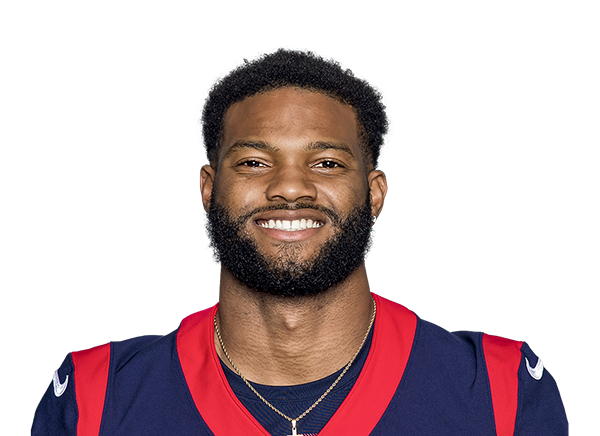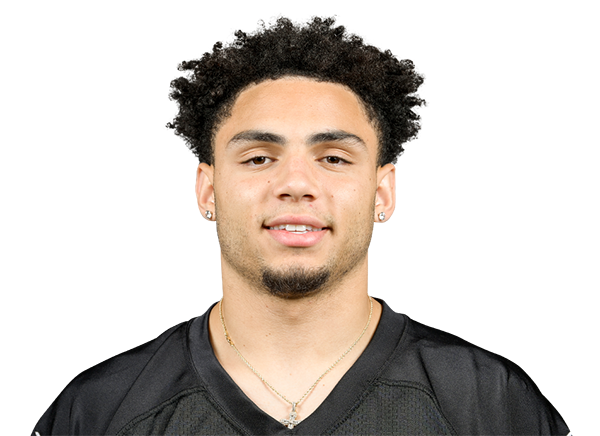Analysis of Rookie Running Backs by ADP: RBs 5-8
Now that the NFL draft is drawing near and dynasty owners all across the country are making their draft boards, it’s time to start helping by reviewing all running backs in order of current average draft position. Not all players pan out at the NFL level, so I am going to be critical at times that require it.
The following is a quick summary of the fourth-eighth ranked running backs by ADP. In this series, I will review as many rookie RBs that I can cover prior to the draft, four at a time. My track record over the past three seasons is near 100%, as shown on our DLF forums by users who have tracked my history. I’m going to put it all on the line yet again for the 2019 rookie season.
I studied the following players for roughly an hour each. I not only watched game footage, but also searched for high school and collegiate interviews. Knowing if a player has the mental capacity to become a student of the game is important, and since I can’t be in the room with them, there’s no better substitute than interviews.
[am4show have=’g1;’ guest_error=’sub_message’ user_error=’sub_message’ ]
Damien Harris, Alabama (ADP RB5)
At 5’10” 216 lbs, Harris has the build of an every-down running back. During his playing days at Alabama, he led a backfield that shared play time with Josh Jacobs. Both players have less-than-average wear and tear on their bodies.
In my review of all his film, I saw him perform just one solitary jump cut. In that cut, he didn’t manage to keep his hips facing downfield, instead leaning in the direction he wanted his body to go. This doesn’t make him a suitable candidate for a zone blocking scheme.
His best plays are ones where good blocking takes place and Harris is able to get into the open field. He isn’t making defenders miss at the line of scrimmage, but instead blows by defenders at mid range with his quickness before being caught from behind by the secondary due to his poor speed.
He has great straight-ahead burst through the line, but not great deep speed down the field. He’s also very strong, overpowering defenders when he meets them head on, and often does win this battle. This helps balance out the speed issue.
One issue I’ve noticed is that he’s run out of basically two plays in his entire career: the read option and the veer. In read option, the quarterback reads the defensive end and if the end is charging the quarterback, the ball is simply handed off to the running back to make a play. In the veer, the ball is given to the running back who is directed to run away, or veer from any defenders that aren’t being blocked.
Alabama is very successful at these two plays, and Harris was a great fit for this system, which explains why Harris was used more than Jacobs at Alabama. When a power-lead or zone run of any type was called, Jacobs was the guy they put on the field.
Zone isn’t Alabama’s strength, so this is why we saw more of Harris than Jacobs. This is the same system in which Eddie Lacy, Trent Richardson, and TJ Yeldon were successful. That is a red flag.
I saw a lot of burst from Harris when given the ball, but only straight ahead, not in the change of direction. This is supported by his combine numbers that show above-average ratings in both the vertical and long jumps, useful drills that measure burst and explosion.
He elected not to run the three-cone and 20-yard shuttles, both drills which measure quickness, balance, agility, and change of direction. This falls in line with his film as well, since I rarely saw him run any plays that require such traits.
In the end, Harris is a strong runner who would excel in power schemes. He has good enough hands to be a three-down back. The only drawback is that there aren’t many runners of this type who go on to have a long career, let alone a productive one at that.
His interviews are fantastic, some of the best I’ve seen. He comes across as articulate and thoughtful. He appears to be a student of the game and is very coachable as a result. Good coaching will definitely help raise his value over time.
I don’t know if he’s fast or quick enough for the NFL level. I think he would be best utilized for short yardage and goal line opportunities. There aren’t too many NFL teams that run a power offense anymore. Teams like versatility and Harris has not got that.
Probability of Success: 60% in a power system, 10% if not.
Rodney Anderson, Oklahoma (ADP RB6)
Anderson played four years of college football but spent most of that time recovering from various injuries. He broke his leg in 2015, a bone in his neck in 2016, and tore his ACL in 2018. His only year of production was in 2017, and there were only eight games of production that very season.
Because of his ACL injury, Rodney Anderson did not participate in the combine, so there are no numbers available to support his game film. Given his injury history alone, I am already shying away from drafting this particular player.
His tape, on the other hand, is impressive. I see him running power, I see him running zone, he’s catching the ball and making defenders miss all over the place. When he was in open space, I audibly said the word “uh oh” because this guy is a home run hitter.
I saw no mental mistakes. He’s as quick and fast as he is strong. He has great hands, he can make people miss at the line of scrimmage if there is space, he can run away from them downfield. His interviews are fine.
One knock is the injuries. Not only did he already have three serious injuries in his short career, but he also plays with complete disregard for his body. Numerous times I saw him dive over defenders for that unnecessary extra yard, or dive for catches while falling down directly on his hip bone.
Not many people say this, but falling down is a skill. Being able to take contact from a defender and hit the ground as softly as possible helps a running back last well into their careers. Anderson’s body was all over the place. It’s not a surprise anymore that he was hurt so much.
He’s still coming back from his ACL. Nobody knows if he’ll still be as quick or fast. He’s going to miss some off-season activities, so he won’t be a big performer year one.
He isn’t making defenders miss in close-quarters. He’s great at making defenders miss in open space and when there’s room at the line of scrimmage, but rarely is it when he’s right next to a defender.
And lastly, Oklahoma was an amazing fit for Anderson. That offense was able to spread out the defense and give Anderson all the opportunity in the world to make a play. I’m not saying that Anderson needs this type of offense to be successful, I’m just saying that his success was assisted by great coaching.
Anderson is a true wild card. If you want to take a shot at a home run later in the draft, this is your guy. If he stays healthy and if he can recover from his ACL, I believe he can be a top ten running back in this league — but that’s a lot of “ifs”, and I just don’t believe it will happen
** Note: Rodney Anderson went through rape allegations over a year ago. He was eventually cleared of all charges, but it’s something to be aware of, and another reason teams may pass on him.
Probability of Success: 15% (this would be 80% if I knew he wouldn’t get hurt again)
Devin Singletary, Florida Atlantic (ADP RB7)
I have to admit: this was the player I was looking forward to reviewing the most. He’s from a small school and I love rooting for the underdog. To get your name mentioned in the top group of rookie running backs is a big deal, so I was expecting to see some greatness in his tape.
Singletary is 5’7” 203 pounds. He’s not a big guy, and there isn’t a long list of players his size who have been an every-down back in the NFL. In order for diminutive players to be successful in the NFL, they have to be agile and able to avoid tacklers at the line of scrimmage.
Here we see Devin surrounded by four defenders. For contect, he is running to his left at full speed. He’s dead in the water, right?
His ability to escape danger is unbelievable. This is one clip of many that I could show. He jump-cuts to the left like it’s no big deal, keeping his body and balance under control the whole way through.
Look how patient he is with his blocks. He lets them develop and then when he sees a hole, he bursts through it. He’s so quick and fast that nobody is able to lay a finger on him despite being surrounded by defenders.
There are so many fun plays to show that I could spend the rest of this article posting gifs and drooling at the possibilities at the next level. But instead, let’s consider some downside.
He played his entire career at a smaller school vs smaller talent. That’s not much of a knock, but his two games vs bigger schools (Wisconsin and Oklahoma) provided mediocre results. He has nearly 800 touches to date. That’s a lot of wear and tear on someone who isn’t that big. There are far more players with far less work on their frame.
His combine numbers are slightly puzzling. He plays fast, but his 4.66-second forty time is slow, and his adjusted speed score – which factors weight into a player’s 40-yard dash – is even less impressive.
He showed the needed burst with above-average vertical and broad jumps, but then posted pedestrian three-cone and 20-yard times. This would usually suggest a runner isn’t agile enough to make moves at the line of scrimmage, but according to all the footage I watched, he clearly can. Something isn’t adding up.
The big problem is that the combine results do not entirely match the film. This is a red flag and NFL teams will be weary. He should go in the third or fourth round to a team that needs depth at the position, and he should contribute well in a running back by committee approach.
Chicago Bears, anyone? A trio of Mike Davis, Tarik Cohen, and Devin Singletary makes complete sense. Devin would easily be a great flex play week in, week out.
Probability of Success: 85% if RBBC, 20% if expected to carry the load, 1% if drafted to a power scheme.
Justice Hill, Oklahoma State (ADP RB8)
This fast little runner stands at 5’10”, 198 pounds. His highlights show constant burning runs one after another. The downside is that most of his runs are sweep and stretch plays, runs that go outside.
These types of plays are not as feasible in the NFL. Defenders are quicker and faster, so outrunning defenses like one would have done in college is not as simple. Hill would need to run more between the tackles.
I will say that when he slows down and is more methodical about his approach to meeting defenders in space, he is able to make a move to avoid them. When he was running full speed, he was unable to avoid defenders.
One negative associated with him is his workload to this point. For a player weighing in at less than 200 pounds, he’s already had 700 touches in his career. That’s more than average when compared to other running backs in this class.
Hill did not perform in the three-cone and 20-yard drills, conveniently pulling a hamstring on his last 40-yard dash attempt. He also didn’t showcase this talent at his pro day.
The NFL combine is a chess game, and players want to increase their value as much as possible. A part of me thinks Hill increased his stock so much via the 40-yard dash that he didn’t want to do irreparable damage by performing poorly in the agility tests.
The lack of agility tests would coincide with his lack of lateral quickness in a game. I love his speed and quick moves to avoid defenders in open space, but I found his ability to create space and push through tackles less-than-appealing.
I think Justice Hill is nothing more than a pure speed back. That’s not necessarily a negative, but as a speed back, there are so few places to go in the NFL to make it work. Tennessee is one such place and would make a great backup for Derrick Henry.
Hill is not big enough to be a full time back. He’s going to need to go to a place with RBBC at best. If so, he’ll be an OK flex play for his career.
Probability of Success: 50% if RBBC, 5% if expected to carry the load, 1% if drafted to a power scheme.
[/am4show]
- 2023 Dynasty Riser, Faller and Longshot Predictions: San Francisco 49ers - July 28, 2023
- The Dynasty Value of Trading a 2023 Rookie Pick for a 2024 Pick - May 19, 2023
- How and Where to Pick Running Backs - May 15, 2023

























































